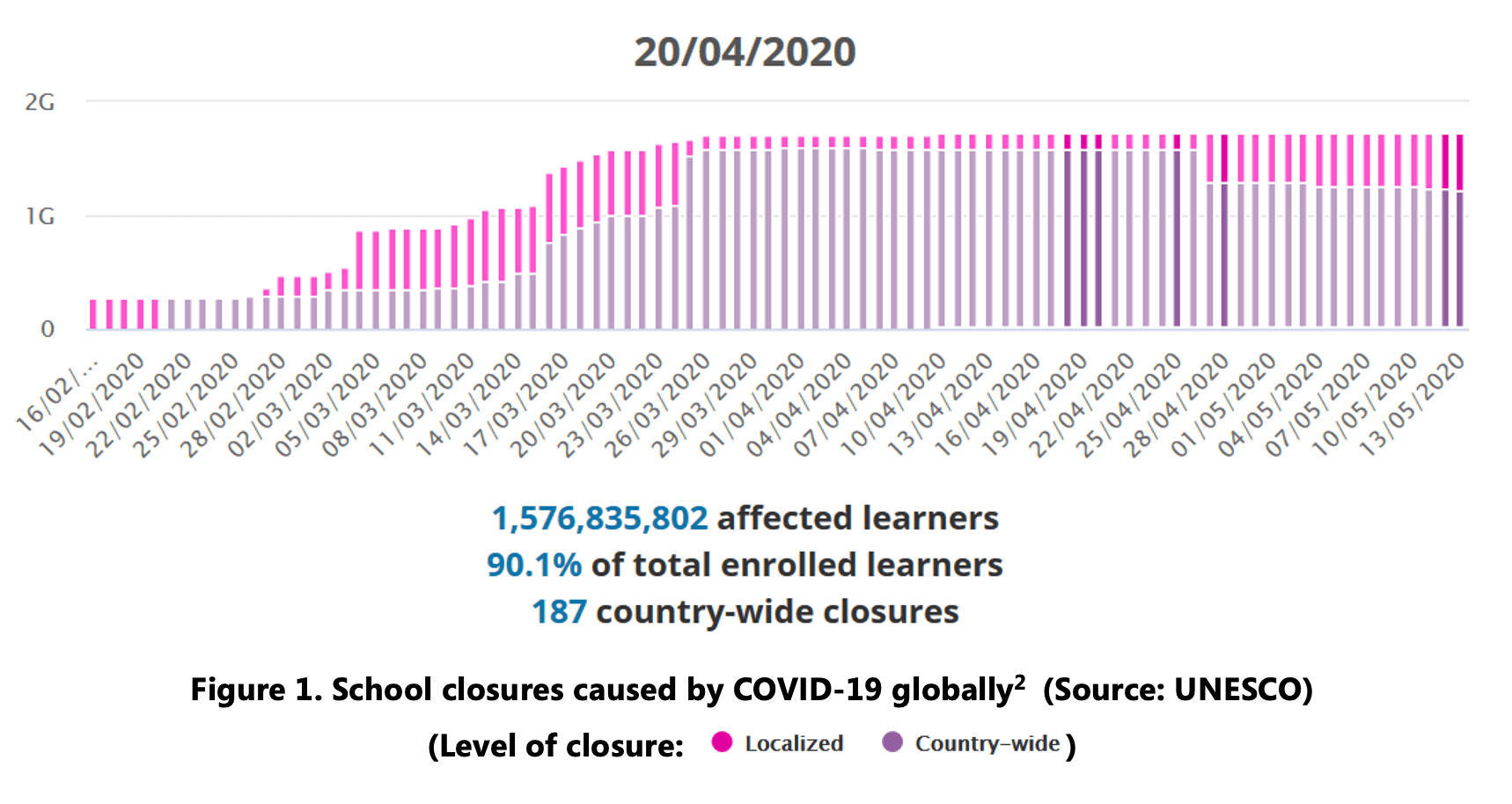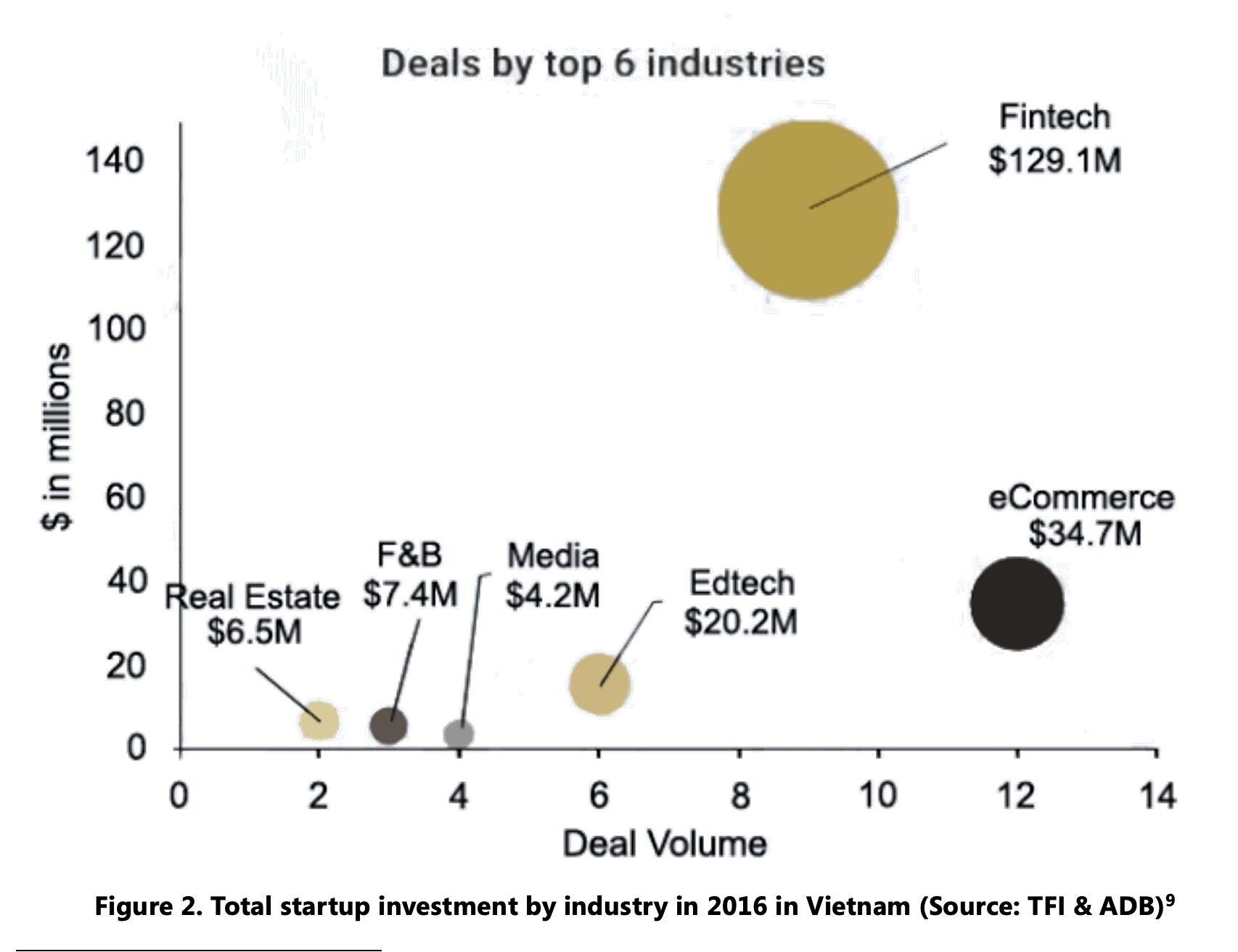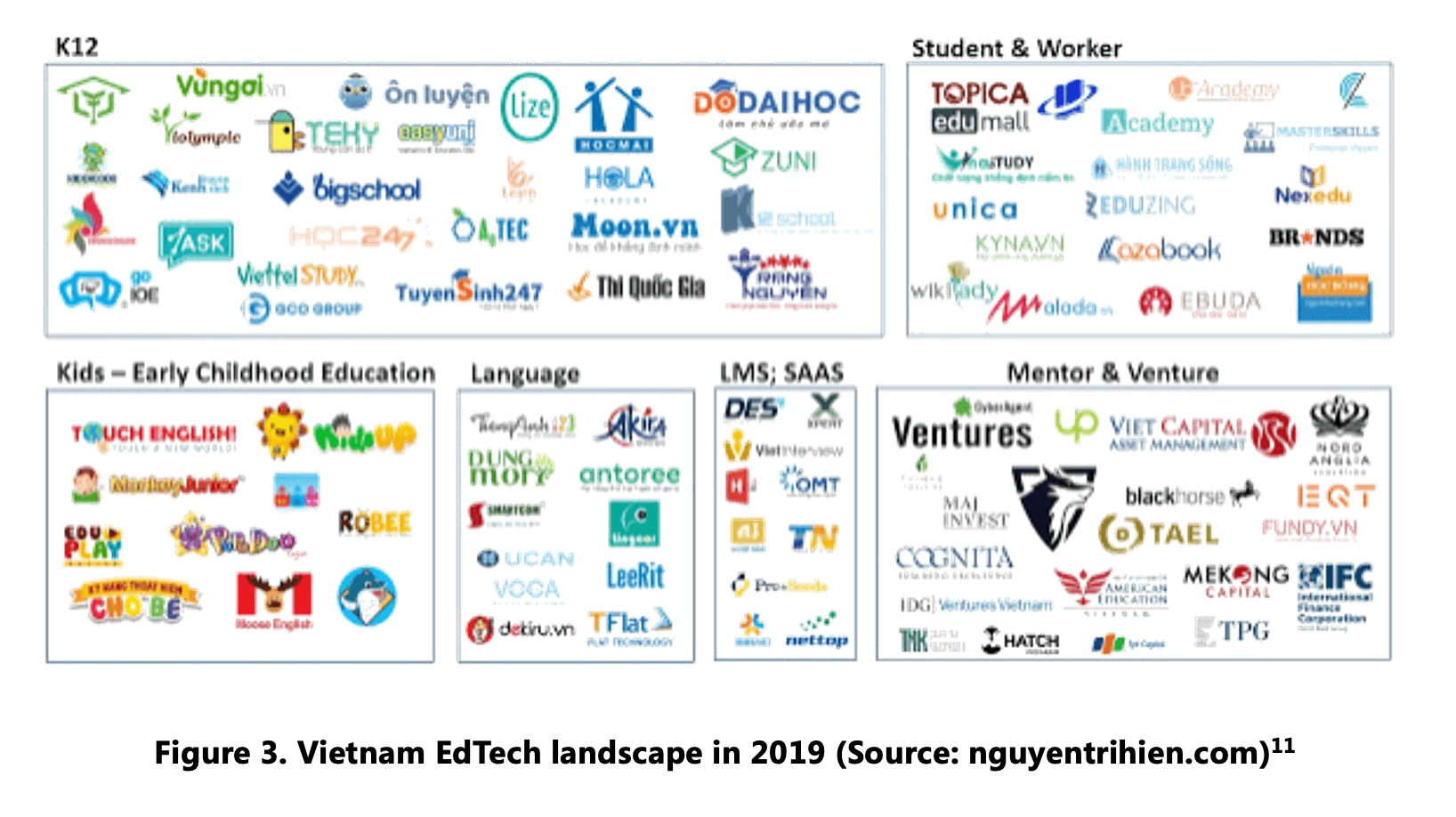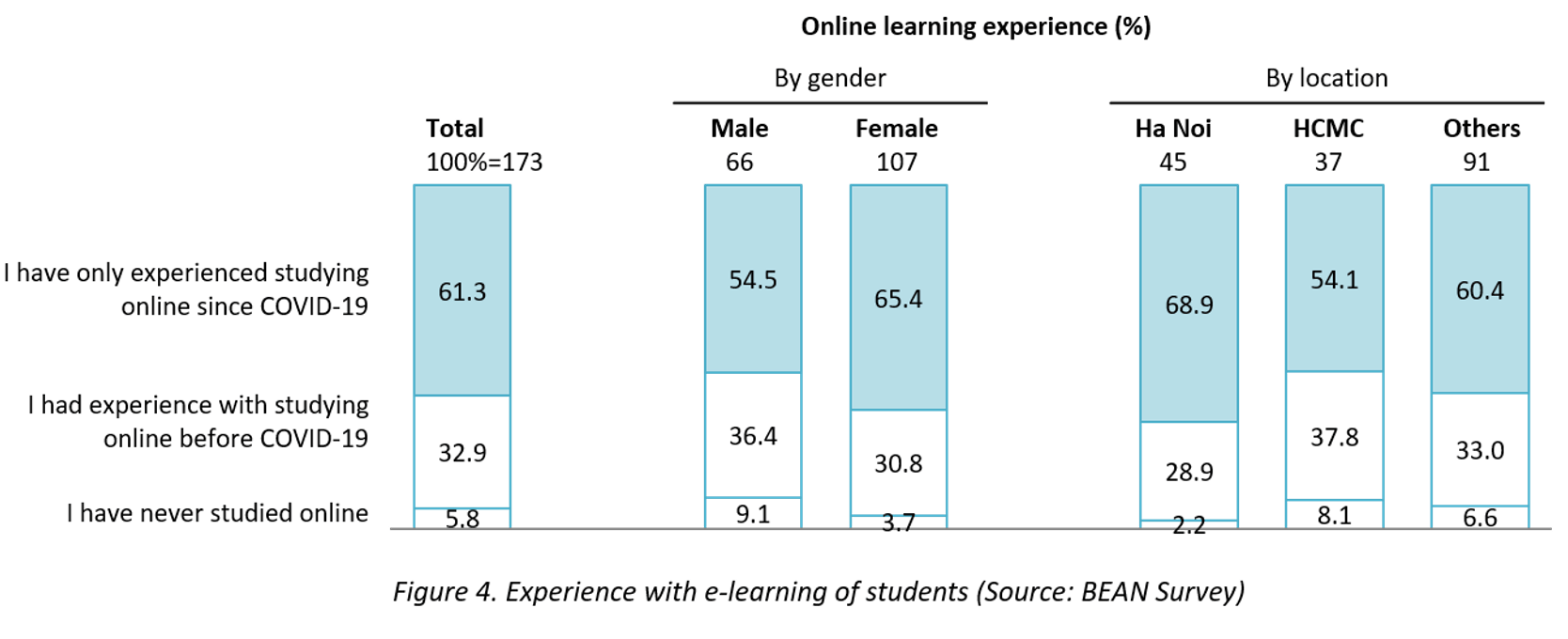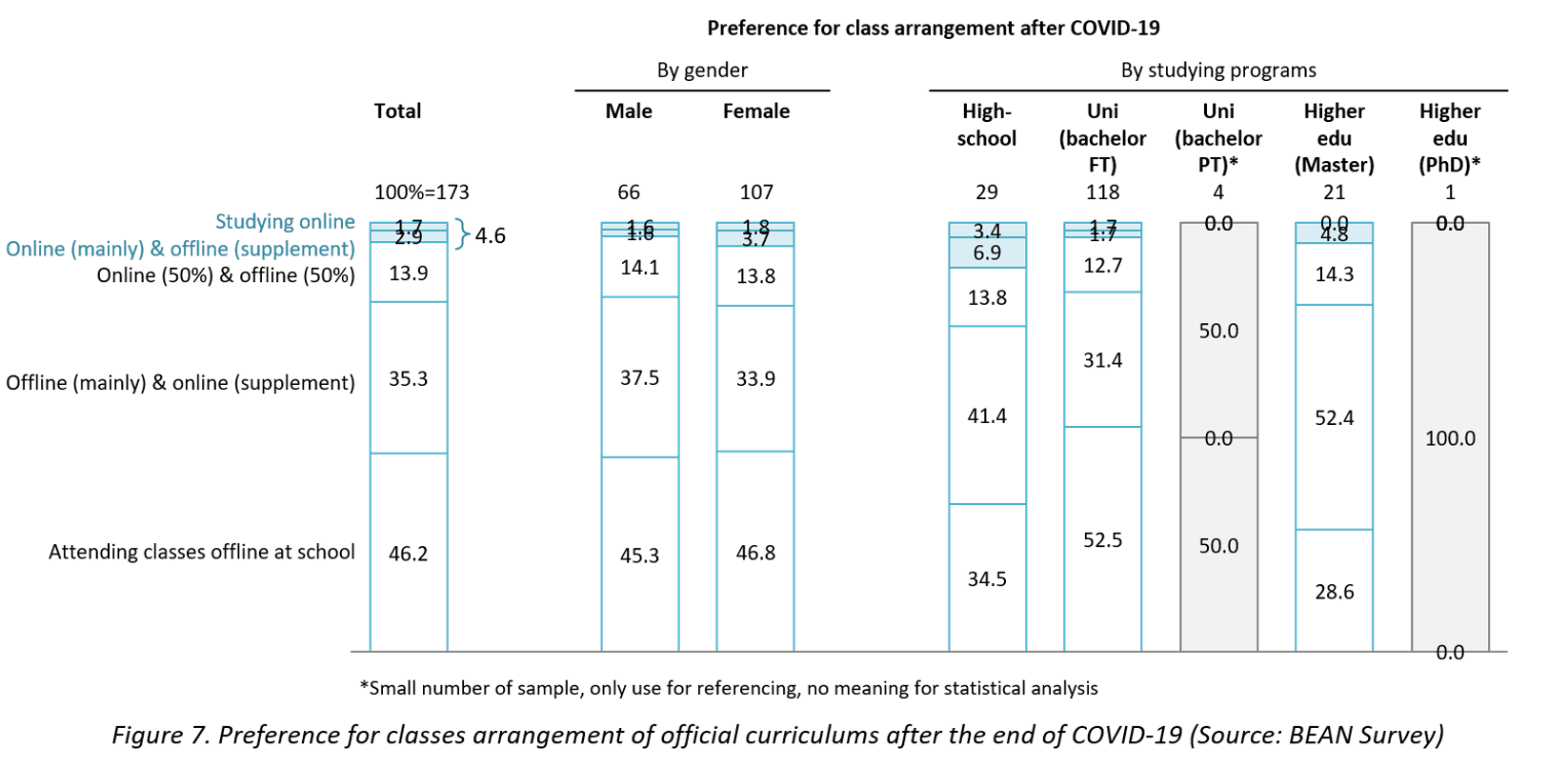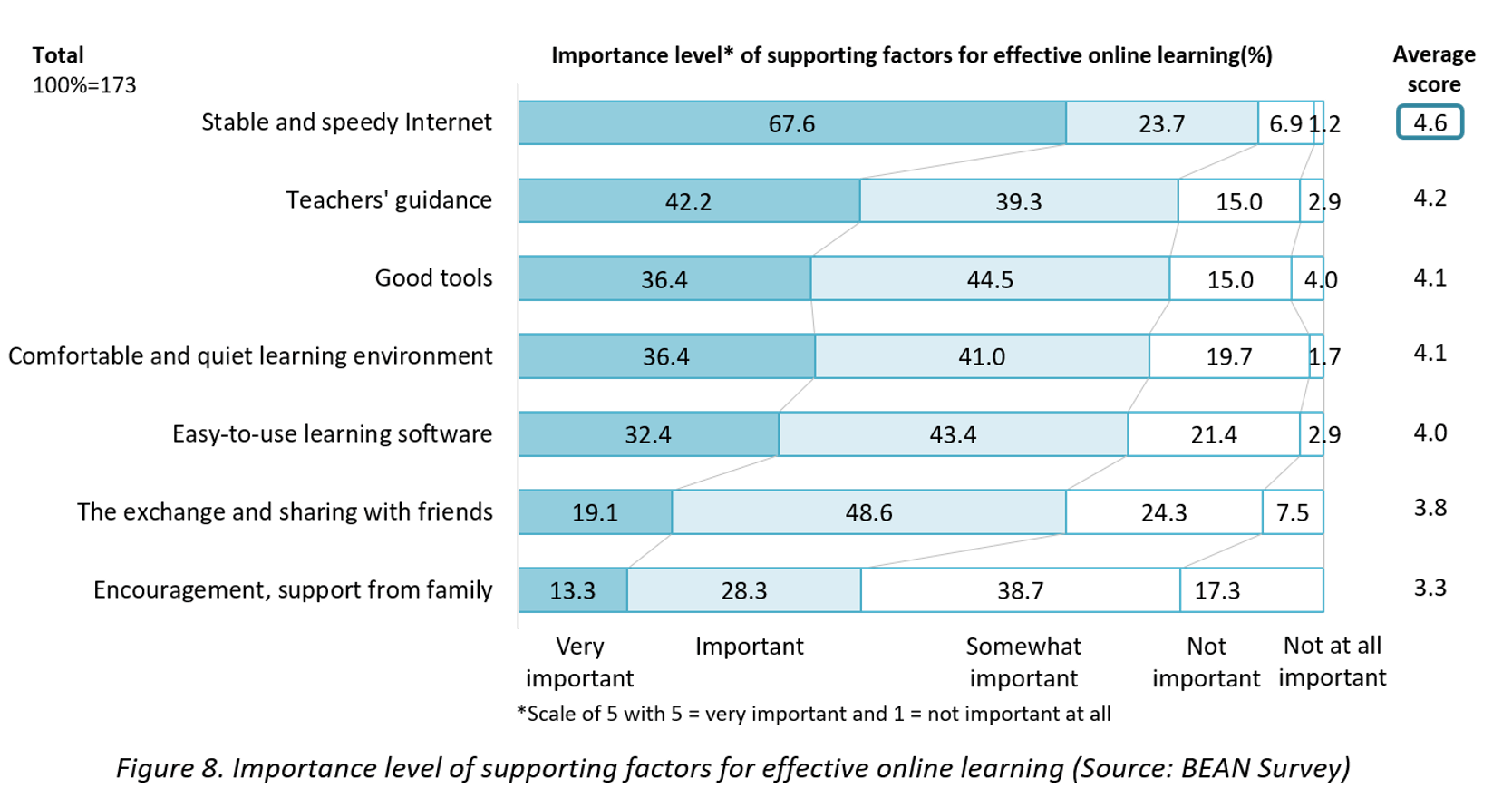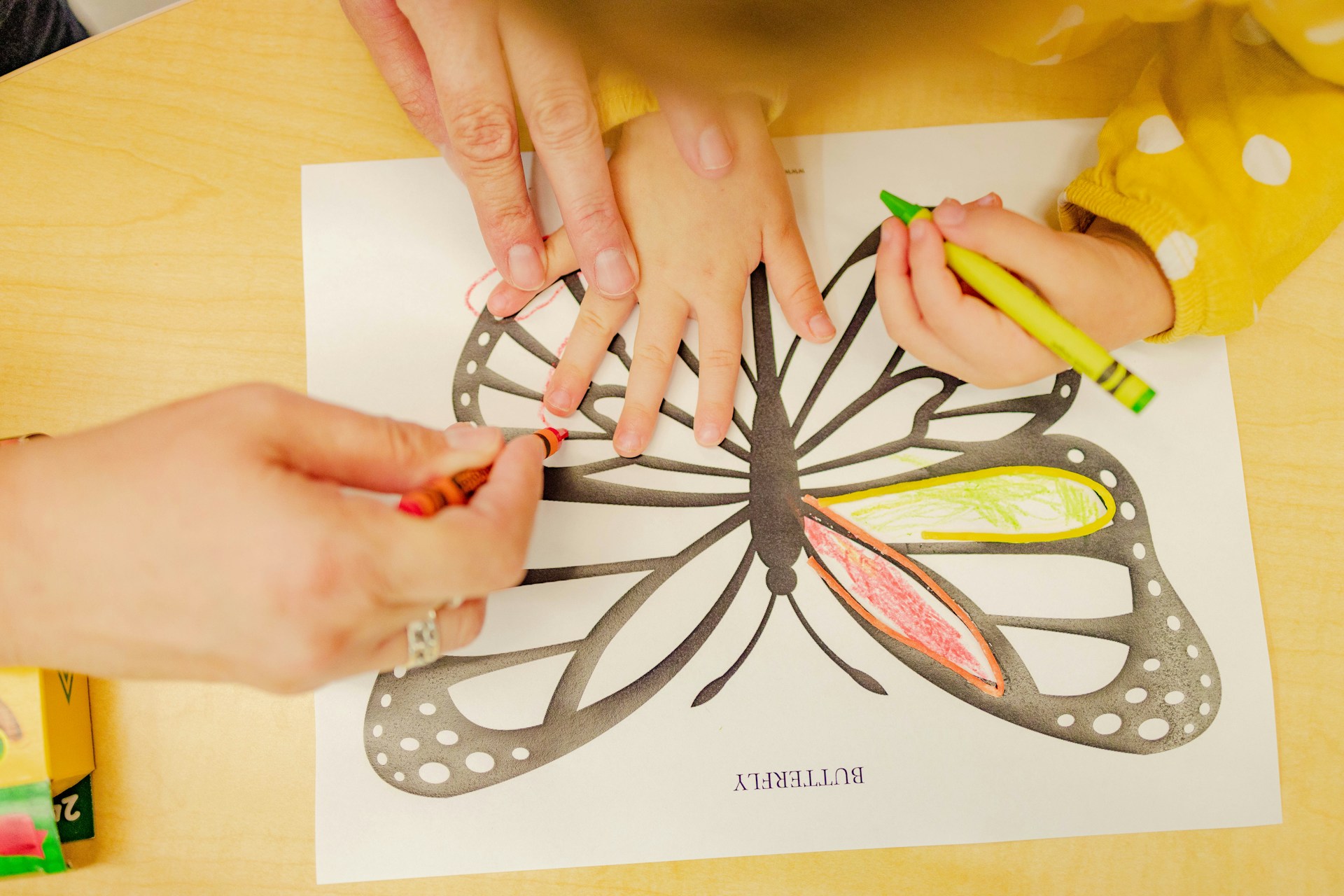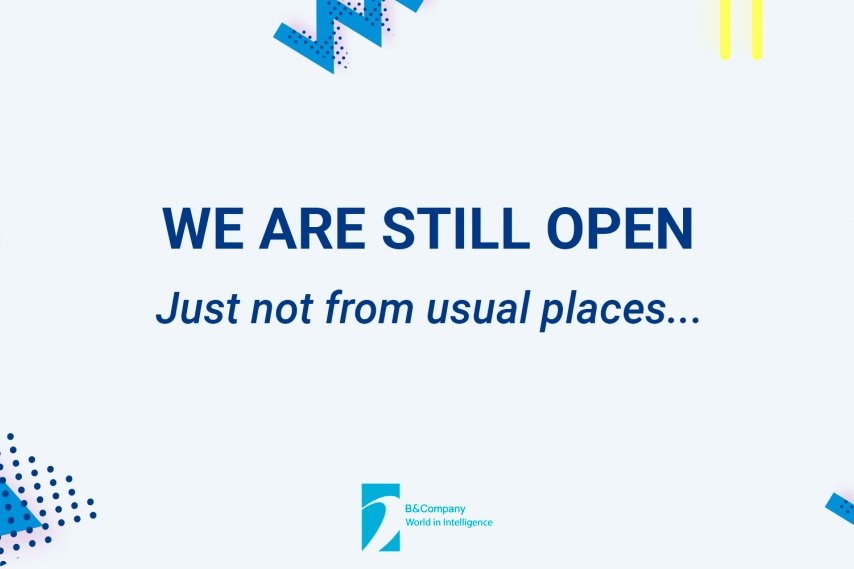
15Jun2020
Industry Reviews
Comments: No Comments.
As of May 3rd, 2020 | Consolidated by B&Company Vietnam & BEAN Survey team
By 20th April 2020, more than 200 countries have been fighting against COVID-19 outbreak, with most countries applied nationwide closures (Source: WHO). This incident has heavily impacted more than one billion students, or over 90% of the world’s student population according to UNESCO’s estimation. Facing this unprecedented event, governments, schools, teachers and students have found ways to stay positive for education and keep learning. The most widely used alternative form of on campus study during this time of uncertainty is online learning.

Online learning overview
According to Petersons, a well-known US publisher, distance learning has a history tracing back in the 19th century, evolving over time from mail exchanging, radio listening, to on-TV and Internet learning. Since then, technology advancement has totally changed the education industry at an unstoppable pace, with global online education market growing at CAGR of 9.2%, increasing from US$187.9 billion in 2019 to US$319.2 billion in 2025E (Source: researchandmarkets.com).
According to Ken Research, Vietnam e-learning industry also holds an enormous growth potential with double-digit CAGR of 20.2% (2019-2023E), and market size of 3 billion USD (2023E) (in comparison with the Philippines’ CAGR of 21.7%, market size of 2.7 billion USD, and Malaysia’s CAGR of 16.1%, market size of 2 billion USD (2023E)).
On the other side, as part of the growing start-up ecosystem in the country, Ed-tech also receive big interest and attention by domestic and foreign investors, only after Fintech and eCommerce.
By September 2019, statistics from tracxn.com indicates 109 Ed-tech start-ups in the market with different content offers – from language study courses, exams preparation to technical and life skills, targeting different B2C and B2B segments.
The COVID-19 impact
Since the first case of the novel coronavirus found in Vietnam in late January 2020, the Government had made an assertive decision of temporarily closing educational institutions. As a responsive strategy, online learning was rolled out by schools and universities for official courses and curriculums.
To many students, that was their first exposure to this form of distance learning. According to online BEAN Survey conducted in April 2020, 56.4% of 218 students only tried online learning due to the impact of this pandemic. This ratio is particularly high among high-school students (58.8%) in comparison with those who are taking undergraduate & vocational programs (58.4%) and post graduate programs (39.1%). (Students: Those who are taking official courses including high-schools, undergraduate & vocational schools and postgraduate programs).
The survey also pointed out that approximately one third of studying respondents had experience with e-learning before COVID-19. Among those, 76.5 % had experience with recorded lessons, and 62.4% reported past experiences with video conferencing type of classes. The majority of them took courses of foreign language (67.1%), computer skills (45.9%) and soft skills (35.3%) online.
Initial difficulties
Being a relatively new form of learning, especially for official courses and school curriculums, online teaching and studying can be initially challenging for teachers and students to get familiar with, not to mention other technical issues from the newly established online learning platforms like overloaded system, mismatch between the number of online classrooms and the number of students’ registrations, unstable transmission signals, host errors, etc.
Social distancing required lecturers to deliver sessions from home; among those, many had to deal with the lack of teaching facilities and tools like quality webcam, microphone and digital board. At the same time, a number of students also struggled with bad/no internet signals, making class attendance difficult. As reflected on BEAN Survey’s result, ‘Stable and speedy Internet’ (71.1%) topped as the most “desired-to-be –improved” factor. The next three most wished for factors follow closely, including ‘Comfortable and quiet learning environment’ (54.9%) (understandably consequence of Vietnam’s popular multigenerational household model), ‘Teachers’ guidance’ (53.8%), and ‘Easy-to-use learning software’ (51.4%).

Indeed, VNPT E-Learning witnessed an increase of 4 times to reach 5 million, with a peak of 100,000 hourly visitors. Similarly, Viettel Study, being introduced in nearly 26,000 schools all over the country, with the database of 29,000 lessons of all levels, gained 41 million visits in a month. Noticeably, these service providers all promise to run them free of charge during the COVID-19 outbreak.
Obstacles, however, can lead path to creativity. Despite hardship of little or no Internet access, students in remote areas were determined to build tents on hilltops kilometers away from home to get Internet signal to study. Teachers also get creative with class design, such as attempt of composing “math songs” series for math classes to improve students’ attention, and changing online physical education class format into fun and engaging “Internet Challenges.”‘
Students’ responses
BEAN Survey results show that the majority of students (16+ years old) admit that online learning is the most feasible and practical option. Only less than 9% oppose this decision amid COVID-19 outbreak, recommending other ideas such as “allowing students to have a break during this time and arranging offline make up classes after returning to school”, and “self-studying and reviewing past lessons.” The portion of support among post-graduate students is noticeably high (95.4%).
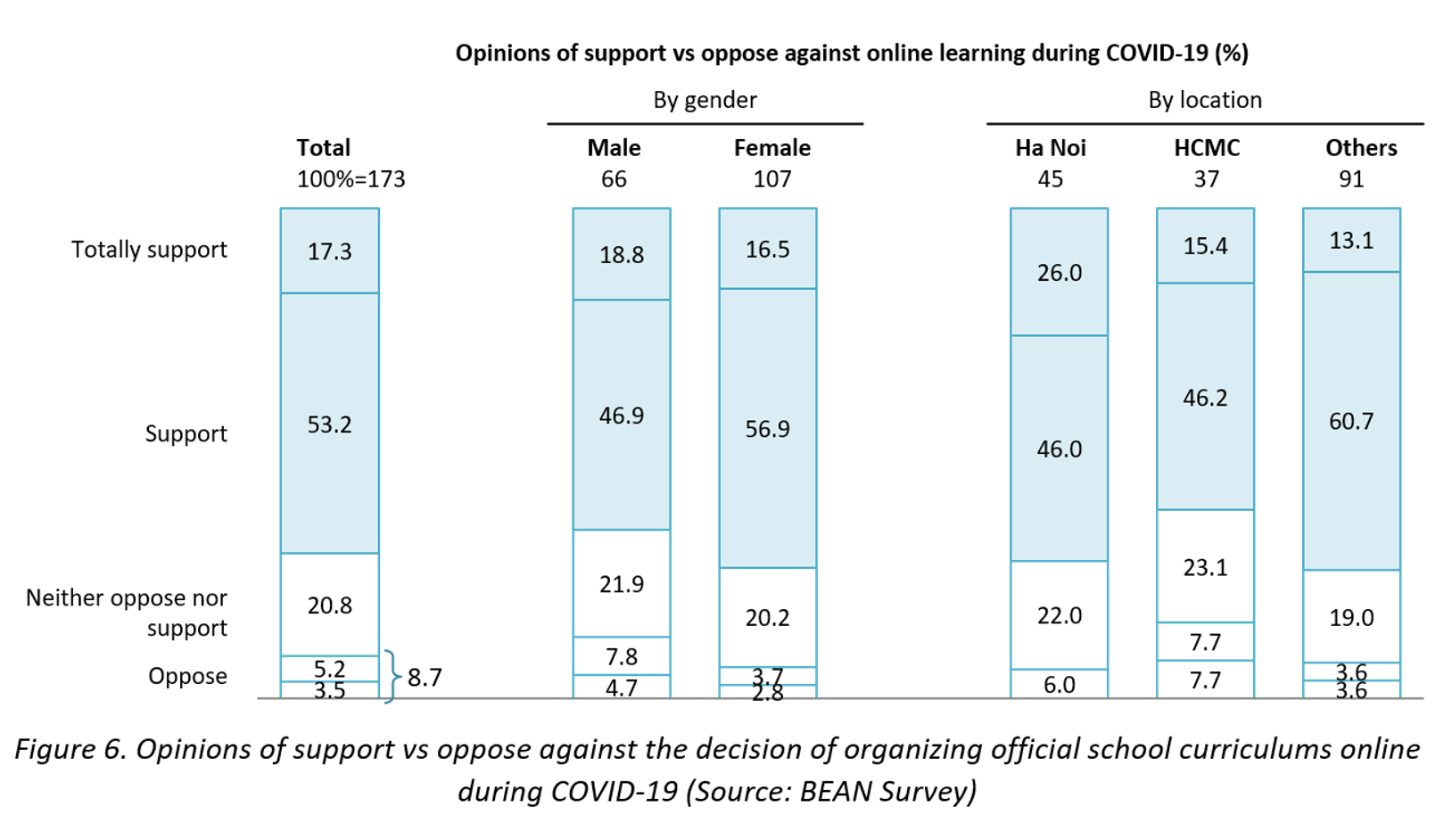
The main reason for this result is unstable and not speedy Internet connection. Although this factor is voted as the most important for effective online learning with score of 4.6/5, 71.1% of all students surveyed say that this factor should be improved to make online learning more effective.
For secondary school students and elementary students, challenges also remain as not all students could comprehend online lessons thoroughly, and attendance rate fall between 60-80% depending on class grade. The highest participating rate is of grade 12 students as they are preparing for graduation exams, but for elementary students, studying independently is difficult while parents might not always be available to study together with their children.
Future of online education in Vietnam
COVID-19 has made an unexpected push on online learning, especially on the digital transformation of Vietnam’s education sector for official courses and curriculums, with joint hands of the whole society. Schools and ministry departments could utilize this opportunity to review, recognize quick adaption efforts and improve upon revealed weaknesses. Parents and students also get familiar with and experience both the pros and cons of e-Learning.
Since Vietnam, for 21 consecutive days as of May 7, 2020, has not recorded any new found cases of COVID-19, many restrictions related to COVID-19 pandemic are now loosened and students are gradually allowed to go back to schools. The question remained to be answered is if Vietnam online education, after a “forced online” spring semester, can continue its momentum of applying digital and technological advancement in teaching and learning, or all accumulated effort and built content will be wasted.
Please read other industry review articles from us or request one!
Duong Nguyen – B&Company Inc
(*) full report available upon request. Please contact info@b-company.jp for details.
